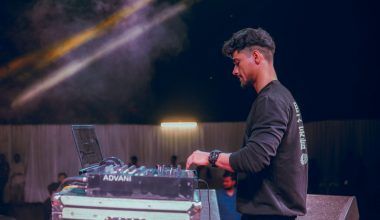Understanding Music Royalties is crucial for anyone involved in the music industry, from budding artists to seasoned professionals. Whether you are an independent artist or signed to a label, knowing how royalties work can significantly impact your earnings and career. This blog aims to provide a comprehensive overview of music royalties, their types, how they are calculated, and the role of music distribution in this ecosystem.
What Are Music Royalties?
Understanding Music Royalties means recognizing that they are payments that artists, songwriters, producers, and other rights holders receive for the use of their music. These royalties are earned whenever their music is played, sold, or used in various formats and platforms. Comprehending Music Royalties is essential for ensuring that artists receive fair compensation for their creative work.
Types of Music Royalties
There are several types of music royalties, each associated with different uses of music. Here, we will cover the most common types:
1. Mechanical Royalties
Mechanical royalties are earned from the physical or digital reproduction of a song. This includes sales of CDs, vinyl records, and digital downloads. Whenever a song is reproduced in a tangible form, the rights holders are entitled to mechanical royalties. Understanding Music Royalties involves knowing how these specific types contribute to an artist’s income.
2. Performance Royalties
Performance royalties are earned when a song is played publicly. This includes radio broadcasts, live performances, streaming services, and even background music in commercial establishments. Performing rights organizations (PROs) like ASCAP, BMI, and SESAC collect these royalties on behalf of the rights holders.
3. Synchronization (Sync) Royalties
Sync royalties are earned when a song is used in synchronization with visual media, such as movies, TV shows, commercials, and video games. These royalties are typically negotiated directly between the music rights holders and the producers of the visual media. A thorough Music Royalties Overview should include these as they are significant for many artists.
4. Print Music Royalties
Print music royalties are earned from the sale of printed sheet music. This is a smaller segment of the music royalties market but still an important source of income for composers and publishers.
How Are Music Royalties Calculated?
The calculation of music royalties can be complex, as it depends on various factors, including the type of royalty, the platform, and the agreements in place. Here is a basic outline of how some of these royalties are calculated:
Mechanical Royalties Calculation
Mechanical royalties are usually calculated based on a statutory rate set by law. In the United States, this rate is currently 9.1 cents per physical or digital copy sold. However, this rate can vary in other countries and can be subject to negotiation. Comprehending Music Royalties means understanding these variations and how they affect earnings.
Performance Royalties Calculation
Performance royalties are calculated based on the usage of the song. PROs monitor the usage of songs through various means, including digital tracking, surveys, and reports from broadcasters and venues. The collected royalties are then distributed to the rights holders based on their share of ownership in the song.
Sync Royalties Calculation
Sync royalties are typically negotiated on a case-by-case basis. The amount can vary widely depending on the popularity of the song, the budget of the visual media project, and the duration and context of the music usage.
The Role of Music Distribution in Royalties
Understanding Music Royalties includes knowing the role of music distribution. Music distribution plays a pivotal role in the collection and distribution of music royalties. Distributors are responsible for getting music onto various platforms where it can be consumed by the public. Here’s how music distribution impacts royalties:
Digital Music Distribution
Digital music distribution involves placing music on streaming platforms like Spotify, Apple Music, and Amazon Music. These platforms generate performance royalties each time a song is streamed. Distributors collect these royalties and distribute them to the rights holders.
Physical Music Distribution
Although physical sales have declined, they still contribute to mechanical royalties. Distributors handle the manufacturing, shipping, and retail placement of physical music formats, ensuring that rights holders receive their due royalties from sales. This is an essential aspect of Comprehending Music Royalties.
Common Challenges in Music Royalties
Despite the importance of Understanding Music Royalties, many artists face challenges in ensuring they receive their fair share. Some common issues include:
1. Lack of Awareness
Many artists, especially independent ones, are not fully aware of the different types of royalties and how to claim them. This can result in significant losses of potential income.
2. Complex Royalty Agreements
Royalty agreements can be complex and difficult to understand, especially for new artists. This can lead to unfavorable terms and reduced earnings.
3. Inaccurate Royalty Tracking
Ensuring accurate tracking of music usage is challenging. Errors in tracking can lead to underpayment of royalties. PROs and distributors use various methods to monitor music usage, but these are not foolproof. This aspect is often highlighted in any thorough Music Royalties Overview.
How to Maximize Your Music Royalties
To ensure you receive the maximum possible royalties from your music, consider the following tips:
1. Register with a PRO
Registering with a Performing Rights Organization (PRO) is crucial for collecting performance royalties. Make sure all your songs are registered with a PRO in your region.
2. Use a Reliable Distributor
Choose a reliable music distributor that offers comprehensive royalty tracking and reporting. This ensures that all your streams, sales, and usages are accounted for.
3. Negotiate Favorable Terms
When entering into royalty agreements, whether for sync deals or distribution contracts, ensure that the terms are favorable and clear. Seek legal advice if necessary to understand the implications of the contract.
4. Monitor Your Royalties
Regularly monitor your royalty statements and reports to ensure accuracy. If you notice discrepancies, address them promptly with your distributor or PRO.
Detailed Insights into Each Royalty Type
To further your Understanding Music Royalties, let’s delve deeper into each type:
Mechanical Royalties: In-Depth
Mechanical royalties are often the most straightforward. For every physical or digital sale, a mechanical royalty is generated. It’s essential for artists to ensure their songs are properly registered with collection agencies that manage these royalties. For example, in the US, the Harry Fox Agency is a significant player in this field. Comprehending Music Royalties involves knowing these agencies and how they operate.
Performance Royalties: In-Depth
Performance royalties can be complex due to the variety of sources that generate them. These include terrestrial radio, internet radio, live performances, and even plays in commercial establishments. PROs like ASCAP, BMI, and SESAC in the US, and PRS in the UK, play a crucial role in tracking and collecting these royalties. Artists must ensure they are registered with the appropriate PROs and that their works are accurately cataloged.
Sync Royalties: In-Depth
Sync royalties can be highly lucrative, especially if a song is used in a high-profile film, TV show, or commercial. Negotiating sync deals often requires legal expertise, as the terms can be complex. However, the rewards can be substantial, making it a key area in Understanding Music Royalties.
The Impact of Streaming on Royalties
Streaming has revolutionized the music industry, changing how royalties are earned and distributed. Platforms like Spotify, Apple Music, and YouTube have become primary sources of income for many artists, but they also present new challenges.
How Streaming Royalties Are Calculated
Streaming royalties are typically calculated based on a pro-rata share of the total revenue generated by the platform. This means that the amount an artist earns depends on their share of total streams relative to the platform’s total revenue. This method can be less predictable than traditional sales, but it provides ongoing revenue as long as the music is streamed.
The Role of Playlists
Playlists have become crucial in the streaming era. Getting a song featured on popular playlists can dramatically increase its streams and, consequently, the royalties earned. Services like Spotify’s editorial playlists and user-generated playlists can drive significant traffic to an artist’s music. Understanding Music Royalties today means recognizing the importance of playlist placement.
Social media platforms like Facebook, Instagram, and TikTok have become significant players in the music industry. They provide new avenues for earning royalties through user-generated content.
Whenever music is used in videos on platforms like Facebook and Instagram, performance royalties are generated. These platforms have agreements with PROs to track and distribute these royalties. TikTok, known for its viral music trends, also contributes to performance and sync royalties.
The Importance of Metadata in Music Royalties
Metadata is the information embedded in digital music files that includes details about the song, such as the title, artist, album, and rights holders. Accurate metadata is crucial for ensuring that royalties are correctly tracked and distributed.
Ensuring Accurate Metadata
Artists should ensure that all metadata is accurate and complete before distributing their music. This includes the correct spelling of names, song titles, and proper registration of ISRC codes. Proper metadata management can prevent a lot of issues related to royalty tracking.
Global Differences in Music Royalties
Different countries have different systems and rates for calculating and distributing music royalties. For instance, the rates and collection methods in the US differ from those in Europe or Asia. Comprehending Music Royalties on a global scale involves understanding these differences.
Regional PROs and Their Roles
Each region typically has its own PROs that manage performance royalties. For example, SACEM in France, PRS in the UK, and JASRAC in Japan. Artists must register with the appropriate PROs in each region where their music is played to ensure they collect all due royalties.
Future Trends in Music Royalties
The landscape of music royalties is constantly evolving. Here are some future trends to watch:
Blockchain Technology
Blockchain technology promises to revolutionize royalty tracking and distribution. By providing a transparent and immutable ledger of music usage, blockchain can ensure that royalties are accurately tracked and distributed. Understanding Music Royalties in the future will likely involve familiarity with blockchain systems.
Direct Artist Payments
New platforms are emerging that allow for direct payments to artists, bypassing traditional intermediaries. This can reduce the time and cost associated with royalty distribution, ensuring that artists receive their earnings more quickly and fairly.
Global Streaming Growth
As streaming continues to grow globally, new markets are emerging. Artists must understand how royalties work in these new markets to maximize their income. Platforms like Spotify and Apple Music are expanding into regions like Africa and Asia, which offer significant opportunities for artists.
Conclusion
Understanding Music Royalties is vital for every artist, songwriter, and producer in the music industry. By knowing the different types of royalties, how they are calculated, and the role of distribution, artists can better manage their earnings and ensure they receive fair compensation for their work. Staying informed and proactive about royalty management can significantly impact an artist’s financial success and career longevity.
Key Takeaways
- Mechanical Royalties: Earned from physical and digital reproduction of songs.
- Performance Royalties: Earned from public performances, including streaming.
- Sync Royalties: Earned from music used in visual media.
- Print Music Royalties: Earned from the sale of sheet music.
- Metadata Accuracy: Crucial for correct royalty tracking.
- Global Understanding: Different regions have different royalty systems.
- Future Trends: Blockchain and direct artist payments will shape the future of music royalties.
Related Articles:
For further reading, explore these related articles:
- Deliver My Tune’s Exciting New Services!
- What is Sync Royalty? A Comprehensive Guide for Musicians
- What is Performance Royalty?
For additional resources on music marketing and distribution, visit Deliver My Tune.






